Features of Point of Sale Software
Performance Guaranteed & Infinite Possibilities Discover Foodship's POS Features

Order Management
The Foodship order management system helps your restaurant staff take control over every aspect of the order-handling process. Foodship, an innovative cloud-based, as well as iOS and Android-based, POS system for restaurants, makes it easy for restaurant staff to handle various types of orders—such as online, dine-in, walk-in/takeaway, and phone orders—using separate devices or screens. This organization ensures smooth and efficient order processing.

Payment Integration
The importance of Foodship POS systems is highlighted by the beneficial features they offer to end customers. Foodship POS systems allow your restaurant’s customers to pay using their preferred payment methods. By incorporating more than one payment method into the POS system, restaurants can enhance customer satisfaction and expedite the checkout process.
Foodship POS systems accept payments from the following methods:
- Cards: Credit Cards and Debit Cards.
- Payment Gateway: Eway, Stripe, Paypal, Secure Pay
- Cash Payment
- EFTPOS: Tyro and SmartPay
-
Don't see your payment gateway here?
We are happy to discuss the possibility of integration. Speak to us.
Important Disclaimer: Our system never controls or monitors your payments. Payments are directly deposited into the restaurant's bank account.
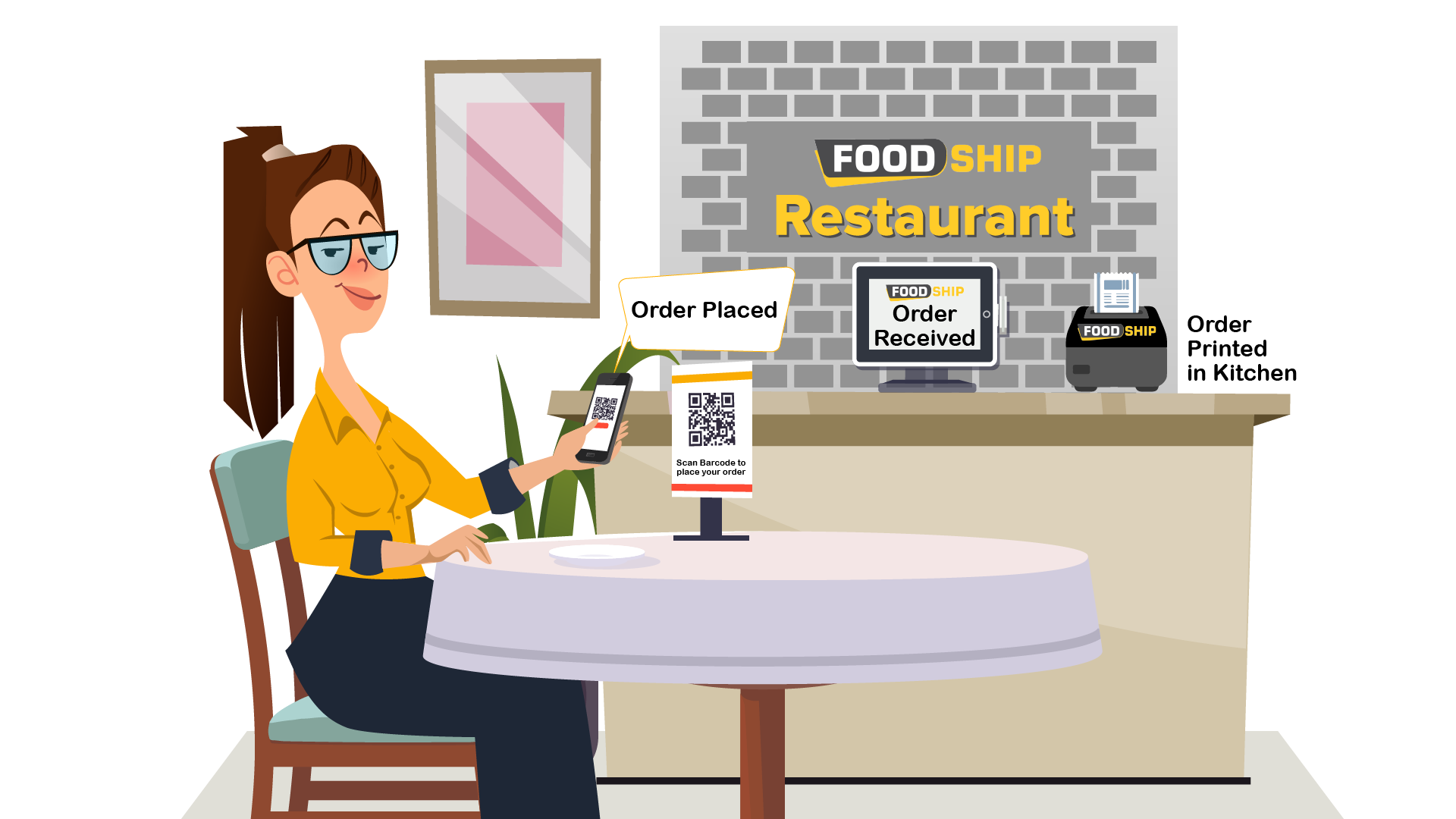
Table Management
Table management in Foodship’s POS system assists the restaurant in table allocation through status tracking, assigning available tables to customers based on their requirements. The primary advantage of this feature is reducing wait time for customers.
Prominent features of the Foodship table management system are:
- Table Creation – Our table management feature depict floors and tables as per the sitting capacity of the restaurant, Restaurant can mark out special area like rooftops, indoors, and the bar, based on how the restaurant is built.
- Table Status Tracking – The restaurant staff can easily monitor the status of every table, whether it's in occupied or available, diner have paid the bill, or assign customer to the table.
- Table Merging – Table merging is an important feature for a big group of diners. Foodship POS system enables the staff to combine two or more tables into a single, larger table and create the bill accordingly.
- Table Movement – Table movement feature allows staff to easily transfer or move a customer's order or bill from one table to another, without the need to create a new order in the POS system.
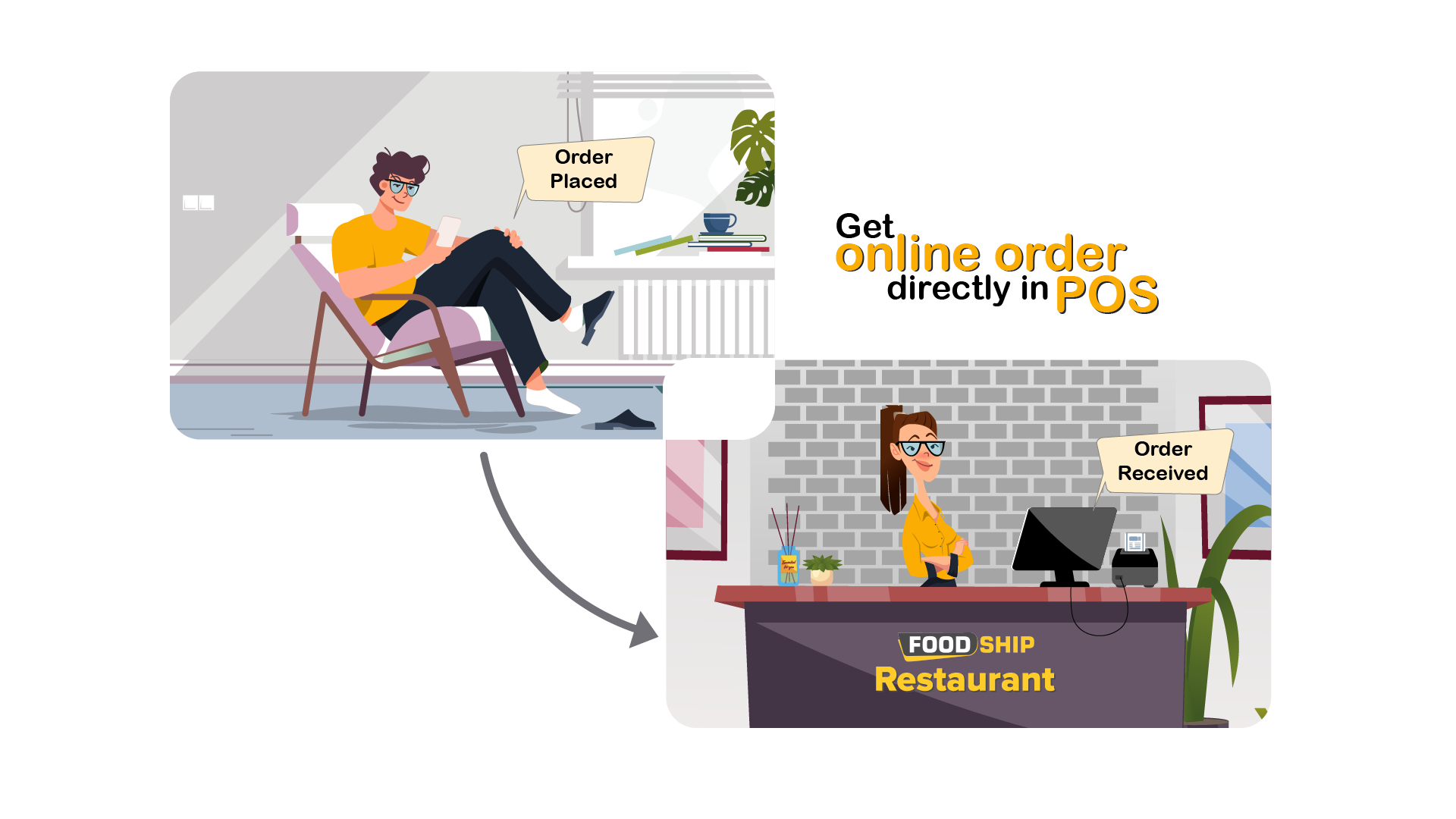
Online ordering integration
Foodship enables restaurants to integrate the Foodship point-of-sale (POS) system with the Foodship’s online ordering system. This integration helps restaurant staff to process both online and offline orders within a single point-of-sale (POS) interface.
Key Benefits of Integration of Online Ordering with Foodship’s Point-of-Sale Software:
- Easy Order Management: Online orders are automatically added to the point-of-sale system, facilitating centralized and efficient order processing.
- Improved Operational Efficiency: Restaurants staff don't have to manually input online orders in POS; restaurant staff can update order status directly from POS, thus automated order processing saves time for staff, enabling them to focus on other productive aspects of restaurant operations.
- Resource Savings: All orders, whether online or in-store, can be managed from a single machine, eliminating the need for restaurants to invest in separate hardware for online and offline orders.

Cloud-based admin panel
The cloud-based admin panel feature offers restaurant owners and managers the convenience of accessing real-time data from the Foodship POS system anytime and anywhere with an internet connection. An important advantage of this feature is that it allows restaurant owners to manage and analyze their restaurant’s performance in real time, regardless of their location. This capability enables them to make well-informed business decisions even when they are not physically present at the restaurant. Restaurant owners have the flexibility to perform the following tasks:
- Analyze Reports
- Manage Menus
- Manage Employee Access and Permissions
- Run Restaurant Analytics
- Monitor Real-Time Data
- Check Employee Working Hours & Attendance
- Check Transactional Data on Daily Basis
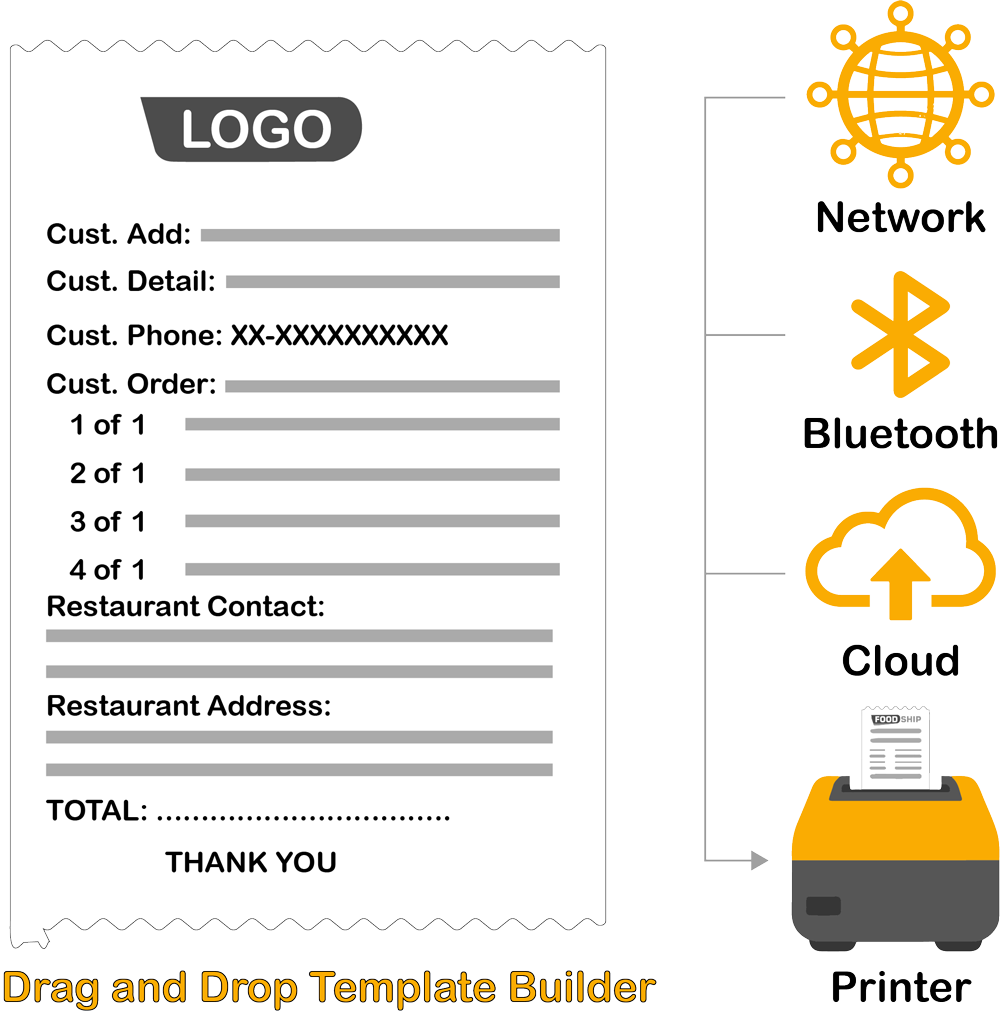
Printer integration
Printer Integration is an important feature of the Point of Sale system that allows communication between the POS software and various printers of restaurants. To test this feature, download the Foodship Android/iOS app and check the connectivity with your existing printer.
- Single Printer for Multiple Devices: With Foodship POS, a single printer can be connected to many POS devices. This advantageous feature lets restaurants link several POS or QR code systems to one printer, saving on hardware costs.
- Zonal Printing Solution for Various Regions: Main benefit of zonal printing feature is, it allow restaurant admin to divide the restaurant in different zone like the kitchen or bar. When an order is placed, the POS system identifies the zone or area and directs the order to the corresponding printer in that zone.
- Utilizing a Single Printer for POS Orders and Online Orders: Restaurants can benefit from the flexibility of printing online orders from their food ordering system directly onto their POS printer. This helps restaurants save on printer costs and use space more efficiently.
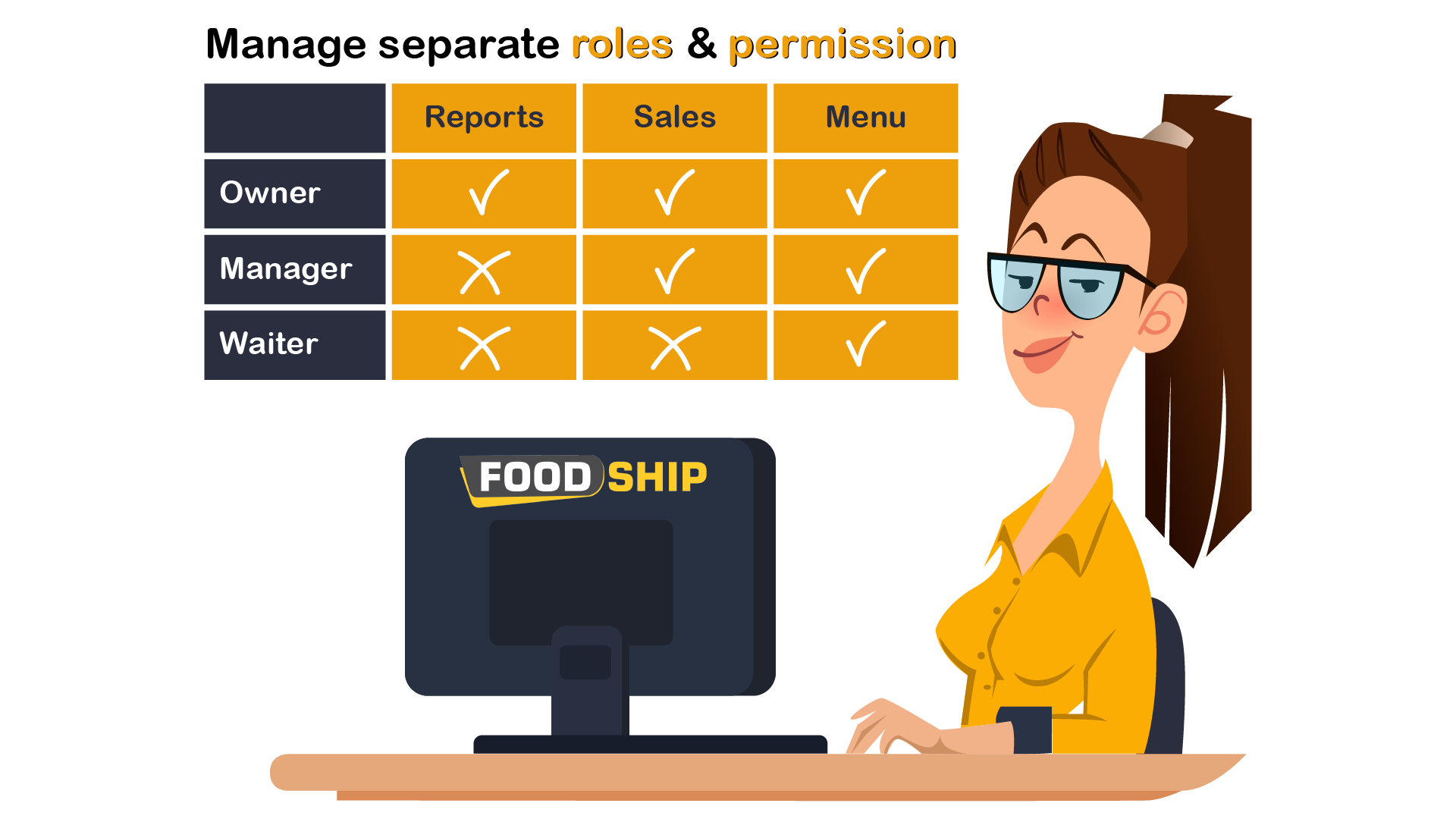
Role and Permission
A significant feature of restaurant Point of Sale (POS) systems is the role-based access control (RBAC). The main importance of role-based access control is to allow distinct levels of access control to staff members according to their roles and duties. For instance, the manager has access to reports, employee scheduling, granting discounts, and modifying menus. Meanwhile, the cashier is limited to handling payments, processing orders, and voiding transactions. Similarly, waiters can solely oversee their shift timings. This feature offers the benefits of enhanced security and systematic operations in the restaurant.

Bill Splits
The Foodship Point of Sale (POS) system offers an advantageous feature of bill-splitting for restaurants. This feature holds great importance as it allows easy and hassle-free bill settlement process for the restaurant but also ensures a smooth checkout experience for customers. This enhancement benefits both the efficiency of the restaurant system and customer satisfaction.
The bill-splitting feature can be achieved in three different ways:
- On basis of specific items: The restaurant POS system provides the flexibility to select specific food items from the bill and charge diners only for the items they've ordered. This feature proves important for larger groups, enabling each individual to pay solely for what they've consumed.
- Equally: An important feature is the restaurant's ability to split the bill evenly among all diners. This simple feature offers the benefit of easy and hassle-free calculations.
- On basis of payment mode: This feature allows for bill division according to the chosen payment method, offering the advantage of splitting a portion for card payment and the rest in cash.
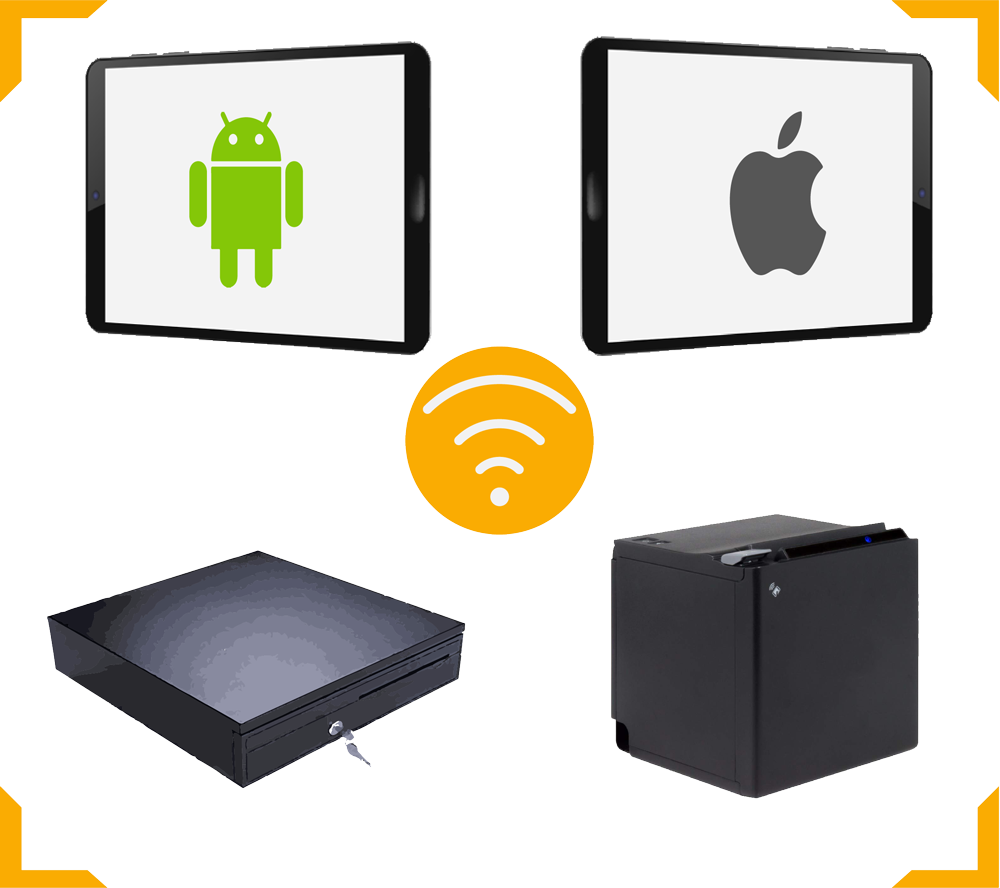
Run POS on multiple screens
During peak hours, restaurants can expedite the order-taking process by deploying multiple point-of-sale (POS) systems on different devices. This helps restaurant staff simultaneously take and process various orders on separate devices, all at the same time. This aids restaurants in staying organized and achieving greater efficiency during busy hours. The significance of the multiple-screen feature is evident for restaurants that offer delivery, takeout, and dine-in services. Different orders can be received and processed on separate screens, with the assurance that orders are handled accurately and promptly.




